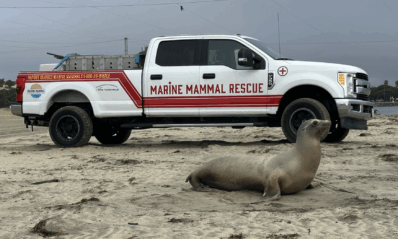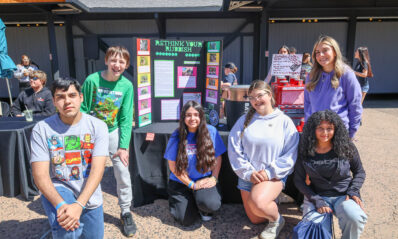
By: Julie Krajewski, Colorado Conservation Specialist
High on Mount Evans, visitors can enjoy views of mountain peaks, alpine lakes and glacier valleys, as well as the chance to see iconic Colorado wildlife, such as Rocky Mountain bighorn sheep, mountain goats, pika, and yellow-bellied marmots. The Summit Lake area is a National Natural Landmark and home to rare plants only found at Summit Lake and in the Arctic circle. With the highest paved road in North America providing the opportunity to drive to 14,130 feet, the Mount Evans Recreation Area attracts 200,000 visitors each year.
While it is unusual to see mountain goats and bighorn sheep in areas with high human activity, on Mount Evans, the sheep and goats often congregate around parking lots and roads. This close proximity to humans can pose serious risks for both tourists and wildlife. Sheep and goats are susceptible to many hazards when near humans, including increased stress, behavioral changes, disease risk, and exposure to human food as well as human and pet waste. Bighorn sheep and mountain goats may act aggressively towards humans if they feel threatened. Both sexes of sheep and goats have prominent horns and are capable of inflicting serious injuries. In 2010, a hiker was killed by a mountain goat in Olympic National Park.
In 2020, Denver Zoo began to study and address human-wildlife conflict on this iconic fourteener. While the Mount Evans Scenic Byway is typically open during the summer months, it was closed due to COVID during the 2020 season creating an experiment for how the presence/absence of huge crowds of visitors impacts wildlife behavior. With support from a National Geographic grant, DZ scientists used remote cameras to document how wildlife used the landscape while the road was closed.
This work continued during the summer of 2021, when the road reopened to visitors. Last summer, Denver Zoo’s Field Conservation team began investigating how to discourage wildlife from congregating in high-human use areas. Bighorn sheep and mountain goats seek out sources of salt and other minerals in their environment. In addition to naturally occurring mineral licks, sheep and goats are drawn to human-created sources of minerals. Some examples of these mineral sources are salt on vehicles and roads, and minerals in human urine found at restrooms and other places humans and their pets urinate. We took soil samples at different locations across Mount Evans to look for signs of higher salt content or other pollution. Also in 2021, Denver Zoo scientists experimented with the use of mountain lion urine as a deterrent to discourage bighorn sheep and mountain goats from coming into the parking lot at Summit Lake. With signs of a predator in the area, goats and sheep may be less likely to enter the parking lot and to congregate around human-created mineral sources.
Aside from interactions with humans, there are other potential dangers to unusually large congregations of bighorn sheep and mountain goats. A higher density of animals in a small area can lead to increased competition for resources and increased aggression within the herds. Larger groups also create the potential for increased disease transmission. The primary threat to bighorn sheep populations today is pneumonia, caused by the bacterium Mycoplasma ovipneumoniae. This bacterium was introduced from domestic sheep herds to wild sheep and goats. While mountain goats typically don’t become ill from Mycoplasma, they can be carriers of the disease and can spread it to bighorn, which are very susceptible and face high mortality rates when infected (70-90%). Large congregations of sheep and goats can create super-spreader events that put entire herds at risk.
Denver Zoo’s work on Mount Evans continues in 2022 as we collaborate with Denver Mountain Parks, US Forest Service, and Colorado Parks and Wildlife to make Mount Evans a safer place for both visitors and wildlife. Some ways that you can help keep wildlife safe and healthy are to only observe wildlife from a safe distance, back away if bighorn sheep or mountain goats approach you, utilize available restrooms, and practice Leave No Trace principles (pack out what you carry in). And never feed wildlife. Keep an eye out for Denver Zoo staff if you’re on the mountain this summer — we’d love to answer any questions you may have about how to share the land with wildlife!
Follow our conservation work on social media by following us on Facebook, Instagram, Twitter and TikTok!








